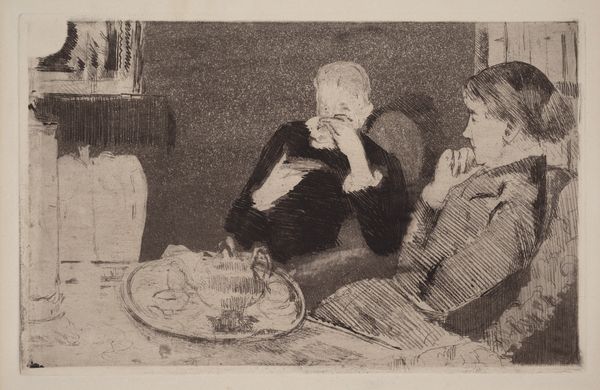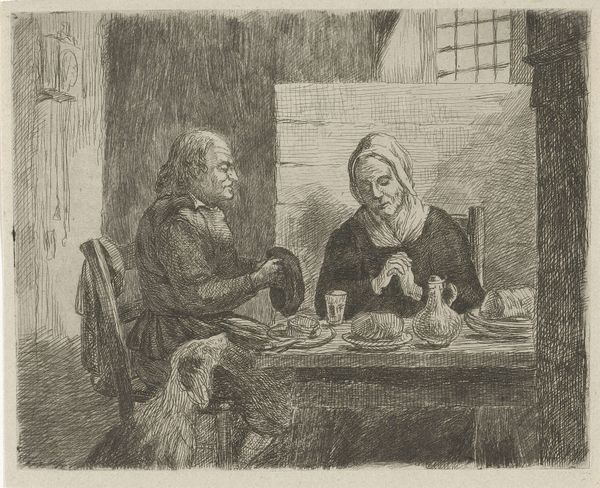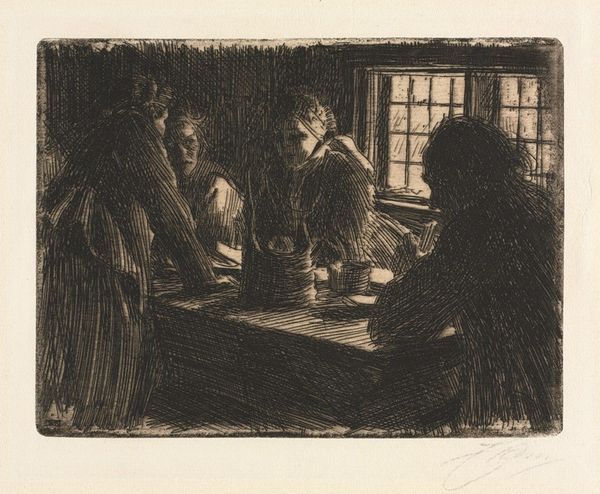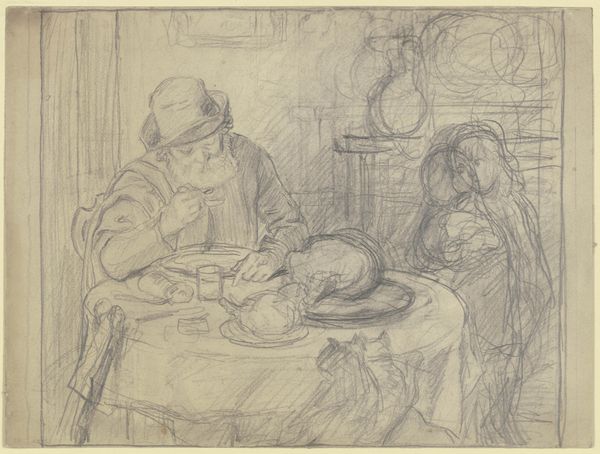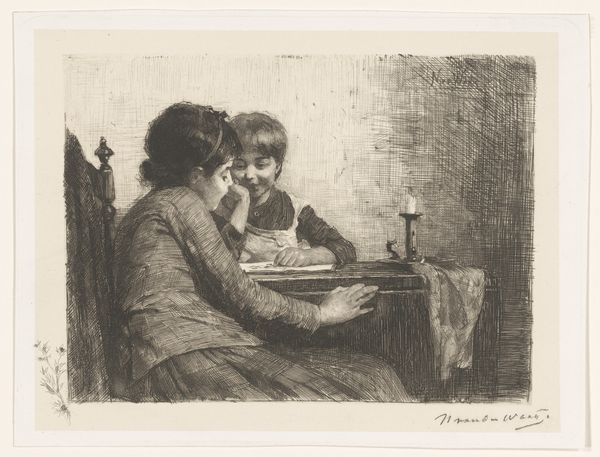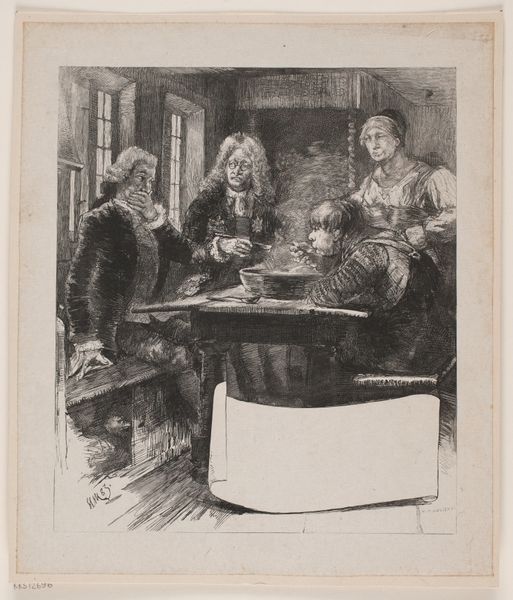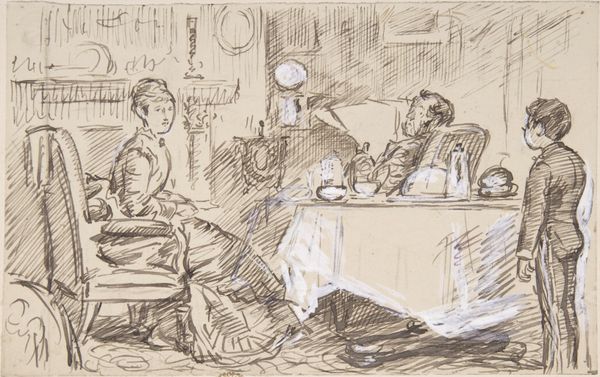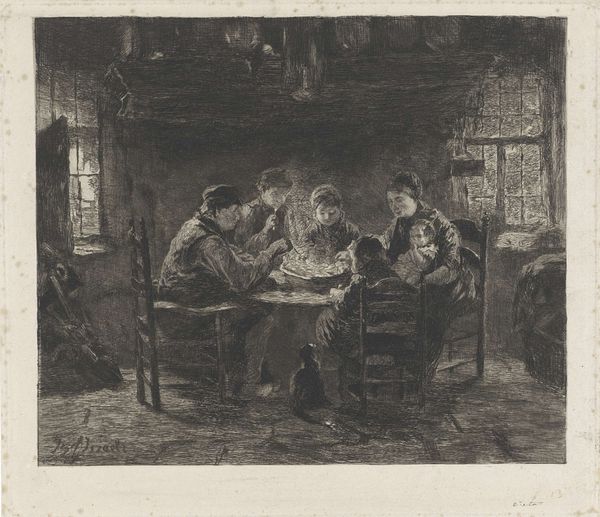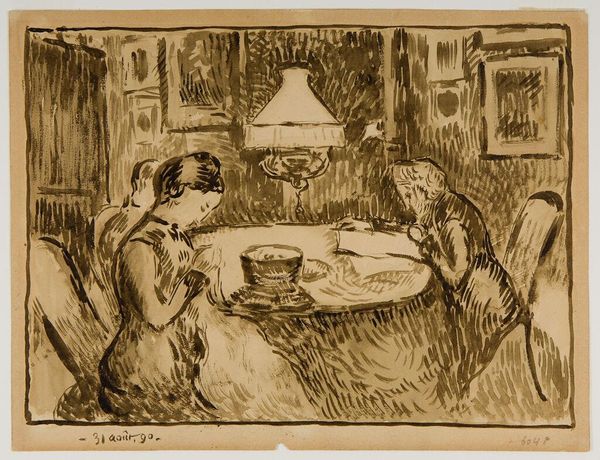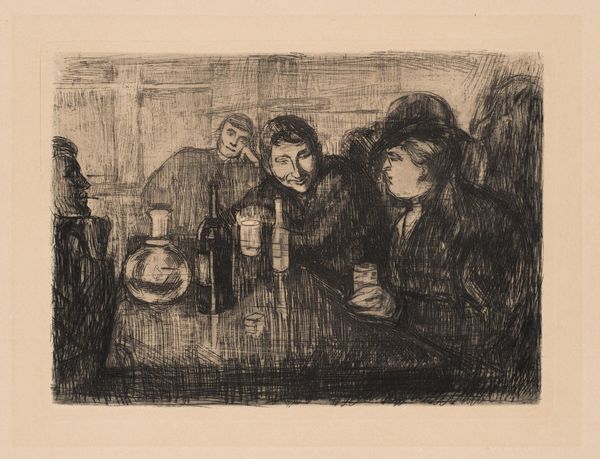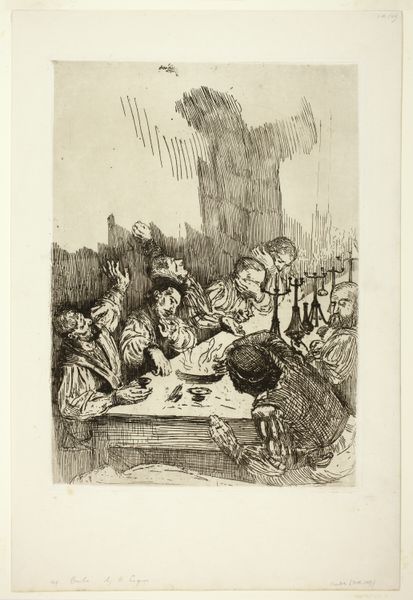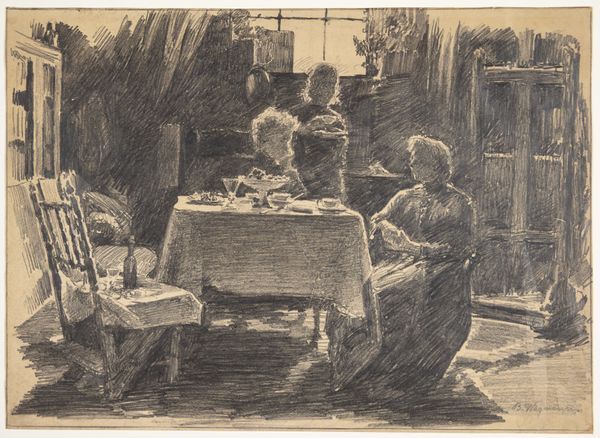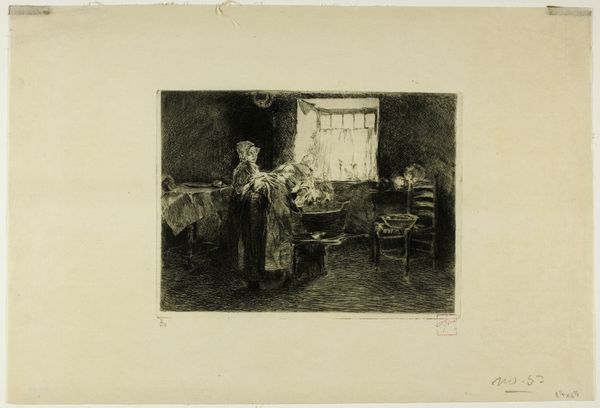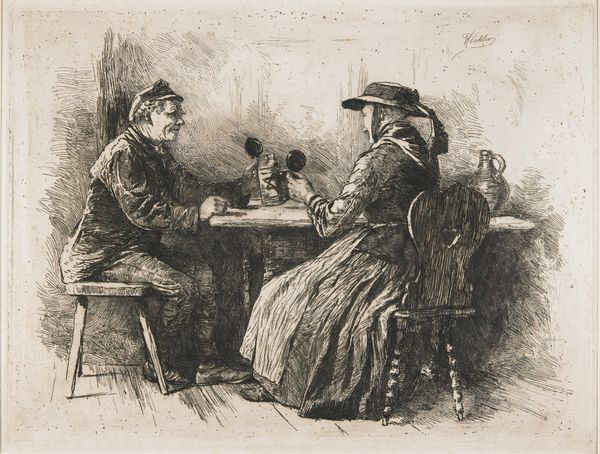
drawing, print, etching, paper
#
drawing
# print
#
etching
#
charcoal drawing
#
paper
#
genre-painting
#
history-painting
Dimensions: 124 × 172 mm (image/plate); 258 × 317 mm (sheet)
Copyright: Public Domain
Curator: Alphonse Legros created this somber etching titled "The Supper" in 1861. It's currently held here at the Art Institute of Chicago. What strikes you about this piece? Editor: Immediately, the overwhelming darkness. The tight cross-hatching amplifies it. Everyone looks rather somber and drawn, clustered together like moths to the weak candlelight. Is this meant to suggest spiritual sustenance? Curator: That’s an astute observation. It fits with the socio-political mood of the time. Legros, as a realist, aimed to depict ordinary life and this portrays working-class conditions, with a stark contrast to the idealized subjects popular in academic painting. It certainly offers a counter-narrative to mainstream imagery. Editor: The imagery is quite biblical in some respects, like the figures sharing a meal—even with the dark atmosphere, the candlelight is like a halo. But then the youth at the head of the table, offering the plate... their solemn expression doesn't communicate any sense of spiritual uplifting, almost as if it's become just a performative action, lacking genuine feeling. Curator: Perhaps Legros is making a broader point about faith, duty, and social responsibility. He grew up in a deeply religious family, so this muted treatment may signal his personal disenchantment with rigid social structures or outdated forms of reverence. Editor: What do you think of his etching style? It seems as if his tight and quick hatching evokes that the figures do not have any time to rest from their life and problems. Curator: Legros developed that style as an effective method for expressing deep human sentiments. His technique is closely associated with a sense of immediacy, which helped spread the artist's images of realism across various circles of society, enabling art to assume a wider, and also, a new important, public role. Editor: "The Supper" does possess the raw and intimate essence of life and death; very palpable in every symbolic act depicted in the image. The mood evoked stays with you long after viewing the artwork. Curator: Indeed. By eschewing grand narratives and concentrating on the understated humanity captured through quotidian encounters, the artist underscores the potency found even in the commonplace.
Comments
No comments
Be the first to comment and join the conversation on the ultimate creative platform.
